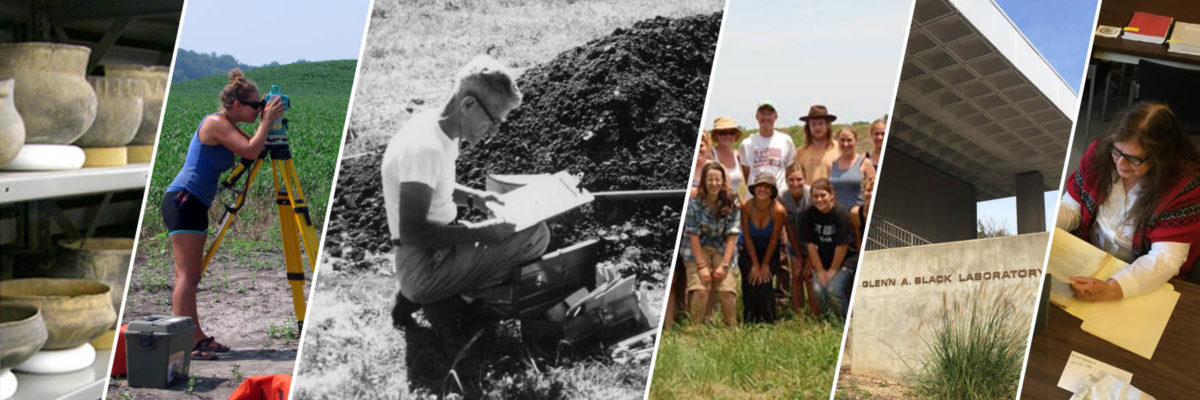January 29, 2018
by Hannah Rea, Social Media Intern
In 1936, Glenn Black published an account in the Indiana Historical Bulletin of the excavations he led at Nowlin Mound in Dearborn County, Indiana. His account is an intimate look at the digs, and is accompanied by diagrams and images meant to place the site in geographic context. It may come as a bit of a shock, given how honest it is in its admission to errors on the part of the excavation team. But the description provided is nonetheless an interesting look at archaeology of the 1930s, and how it differs from methods of today.
The land, owned by Guy Nowlin as of 1912, was used as a playground by local schoolchildren. The first official excavation was started in 1934 and, Black reports, the old schoolhouse was used as a “windbreak.” Several trenches of varying lengths were dug to expose the different areas of the mound. These trenches, dug with vertical faces, revealed a soil makeup of various types of clay and uncovered pottery sherds and projectile points. Two log-lined burials sites were found. The next season was delayed by heavy rains, and finally began in June 1935. Several other log-lined burials were found, one of which was found to have been damaged by moisture.
Black reported about 60% of the artifacts recovered from the site were found in the first season. He divided them into two categories: intentional deposits (those artifacts placed in the burial sites by the mound builders) and chance deposits. The latter could have been explained by error on the part of the excavators; an example given was the discovery of pottery sherds, which could have accidentally made their way into a site, once disturbed by the digging of a trench. This provided an interesting insight into the method: not only were the archaeologists on the site aware of the possibility their actions were disturbing the site, but the head of the dig duly noted it in his report.
This gave me pause; I had always assumed excavation techniques of the 1930s and ‘40s were disruptive and sometimes dangerous, but had never stopped to think whether or not the archaeologists realized it. This article, written by Black after he had headed the digs at Nowlin Mound, made me wonder how often archaeologists of the time acknowledged the nature of their techniques. Despite the fact that Black was never academically trained in archaeology (as was common at the time), he was still a noted figure in Midwest archaeology; his report made for an interesting read and illuminated the methods he and his team employed, and the errors to which they had admitted during excavations.

